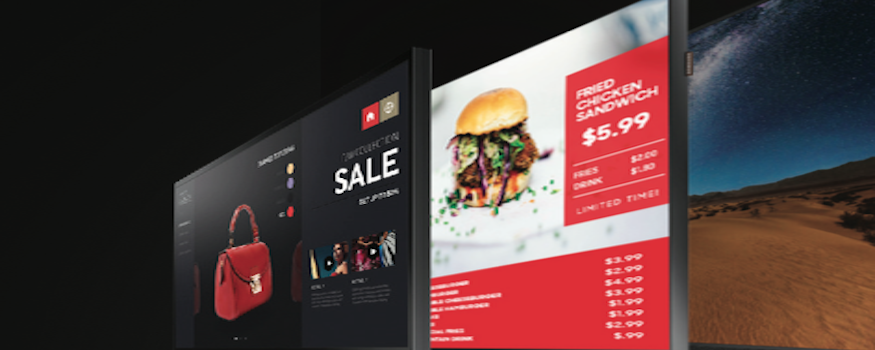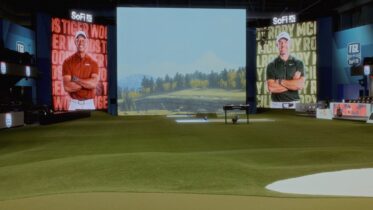While cutting out the cost of an external digital signage media player is the obvious benefit, there’s much more to the total cost of ownership argument for Smart Signage displays.
Using commercial-grade displays that ship with a built-in digital signage media player starts saving users time and money even before the hardware arrives at the installation site, and lets them keep on saving through the operating life of the network.
The Samsung Smart Signage display series debuted in 2013, and is now in its fifth generation. The original idea behind Smart Signage was to streamline the deployment model, delivering an increased digital signage ROI based on lower upfront capital costs, as well as reduced ongoing labor and maintenance costs. Five years on from launch, we ran the numbers again, and based on conservative, real-world estimates, our 2017 TCO analysis suggests systems integrators and solutions providers can trim digital signage network costs by 10-41 percent. Scaled across a 40-site, 200-screen network — typical of the deployments we’ve seen in recent years — even that 10-percent saving can equate to a $60,000 reduction in project costs.
A New Status Quo for Signage
When my team gets asked about the digital signage ROI argument for Smart Signage, the obvious cost reduction comes up first: the media player hardware. The first System-on-Chip (SoC) “smart” displays coming on the market five years ago had limited computing power and were not a fair match for separate PCs or setback media player boxes. But the latest generations are now genuine alternatives to the mid-range PCs and players commonly used by digital signage integrators and solutions providers. The newest Samsung Smart Signage displays, running the Tizen operating system, can show three concurrent videos at once.
Smart Signage Cuts Costs
Download our smart digital signage total cost of ownership study. Download Now
That kind of power, coupled with full support for HTML5 content, ends any argument that Smart Signage displays can only produce compromised results. What we’re seeing from our partner ecosystems and their customers now is a wholesale shift away from networks based on a separate digital signage media player to ones running off our built-in players. The food services industry has been a big adopter, but we’re seeing large rollouts across a wide variety of verticals. When a network can credibly, comfortably, cut $280 or more per installed display out of a budget, that gets attention and action.
Our new TCO study, authored by leading digital signage writer and consultant Dave Haynes, found that if you couple that with reduced hardware costs for fewer cables and less installation labor time, it’s a compelling business argument.
It’s Not Just About Money
The upfront cost savings are not just with the display and the work putting them in place. Our ecosystem partners are telling us their jobs are easier, and other costs have dropped off by shifting from PC-based deployments to Smart Signage. Typically, integrators using a PC-based solution get manufacturers to ship players to their staging facility for quality assurance and to load the operating system, player software and initial content. They then get packaged back up and shipped to the installation site.
With the newest Smart Signage displays, there are no players to pre-load and the screens are drop-shipped directly to the installer or the site. The latest software and content is updated over the cloud when the screens are up and connectivity established. That saves resource time, and significant shipping costs.
Once in place and running, Smart Signage screens are controlling costs in two main ways:
- Minimized outages: Everybody knows about the dreaded “blue screen of death” seen at troubled digital signage installs that have hung-up PCs, but field outages on many conventional digital signage jobs can be caused through little things like bad cables, video signal boxes and connectors — something no amount of rebooting will ever fix. Smart Signage projects, meanwhile, eliminate every cable and connector other than the power cord. There are almost no potential points of failure, and our ecosystem partners are telling us their field outages have dropped dramatically.
- Easy remedies: If a digital signage network uses computers in the field, when there are problems that can’t be resolved by remote software, there are few good options. You ask the person on-site to find a mouse and keyboard, and then get on a ladder or squeeze in behind something to try to work out a fix. A potential plan B is sending a field technician that costs about $200 an hour.
With Smart Signage screens, any outage that can’t be resolved through remote management tools can usually be easily resolved on-site by local staff or through the included remote. Powering off a Smart Signage screen with that remote does a hard reboot, which can usually solve most signage-related problems.
Other display manufacturers have since debuted their own versions, but only as one potential option in their diverse lineups. Samsung, by comparison, has SoC displays through the breadth of our product lineup — from 10-inch wall displays to 82-inch units built for premium positions. Years ago, we saw the potential to shift the marketplace, and with this latest Smart Signage generation, we’re seeing widespread adoption and a new standard for digital signage.
Digital signage can provide a new level of customer interaction and engagement for your enterprise.








